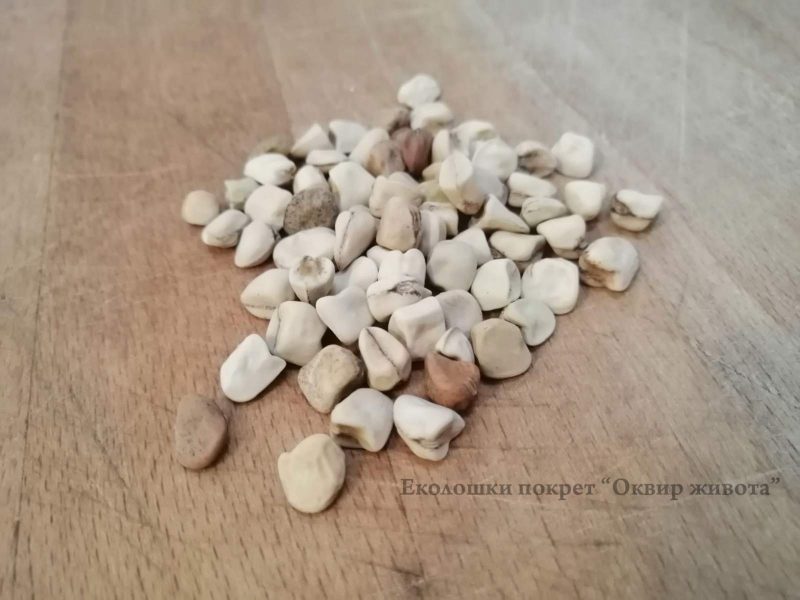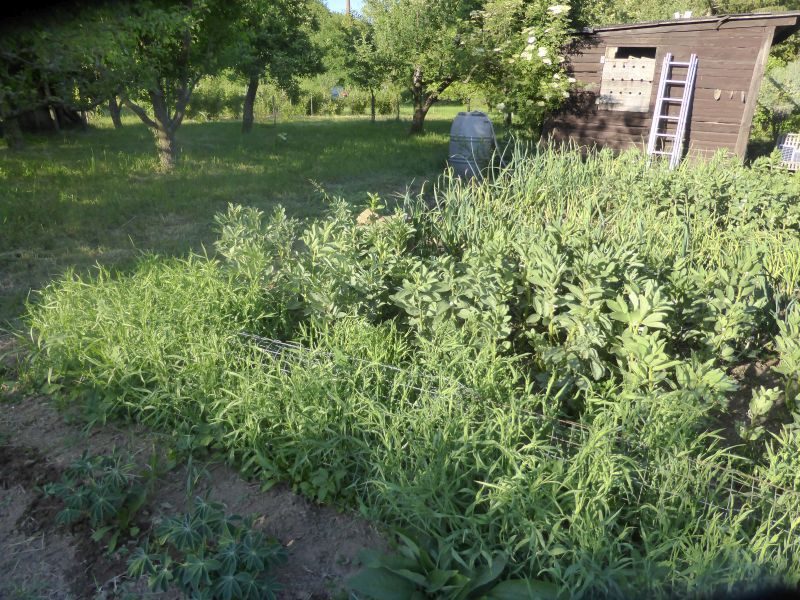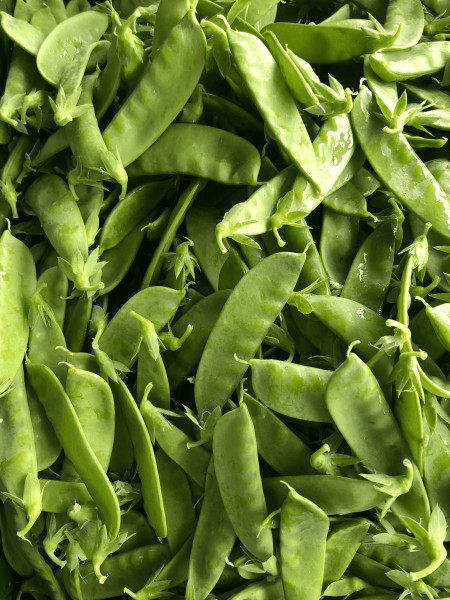(Pisum sativum L.)

Family: Fabaceae
Subfamily: Faboideae
Genus: Pisum
COMMON NAMES:
Pisum sativum L.: common pea, garden pea, sweet pea, shelling pea, snow pea, sugar snap pea, dried peas, fodder pea, grey pea, winter pea, spring pea, petit pois, marrowfat pea.
P. sativum subsp. arvense (L.) Asch: field pea, grey pea, fodder pea, carlin pea, badger pea.
ORIGIN
Peas are one of the oldest cultivated crops. The wild plant is native to the Near Eastern centre of crop diversity. Domestication of wild pea plants probably began with the start of agriculture in the fertile crescent about 11,000 years ago, where they were likely companion plants to early-domesticated forms of wheat and barley. Peas entered Europe through its south-east regions and then progressed into its interior via the Danube, ancient Greece and Rome. Its distribution was rapid. Linguistic evidence supports the fact that peas have been present since very early in nearly all regions of Europe. They were brought to the New World during colonisation by Europeans.
VEGETATIVE AND GENERATIVE CHARACTERISTICS
- Peas are annual plants with a climbing or bushy growth habit, depending on the variety. Pea plants have slender, hollow stems that can reach heights between 45 cm for bushy varieties to 2-3 metres for climbing varieties.
- The leaves consist of stipules at the junction with the stem and multiple leaflets arranged in pairs along the petiole. The leaves terminate in tendrils which allow the plants to vine on climbing supports. Some varieties are semi-leafless, also called “afila”, meaning that their leaves only consist of stipules and tendrils. This increases standing ability in pea sole crops and reduces susceptibility to leaf diseases.
- The roots can reach 70 to 80 cm. The taproot branches mainly in the upper part. Nitrogen-fixing nodules are mostly located in the first 10 to 15 cm.
- The flowers are typically white, pink, or purple and come in elongated clusters with individual flowers attached to a central stalk. Peas are typically self-pollinating, meaning that the flowers have both male and female reproductive structures and can fertilise themselves. However, cross-pollination can also occur through insect activity.
- Pea pods can vary in shape, size, and colour depending on the variety: they are 3 to 15 cm long and contain up to 11 seeds.
- The seeds are spherical, can be either smooth or wrinkled, 4 to 8 mm in diameter and vary in colour. Seed colours include yellow, green, brown, purple and creamy white.
SOIL AND CLIMATE
- Light and deep soils with a pH above 6 and with good drainage capacity are preferred. Soils that tend to remain waterlogged for long periods of time are not suitable.
- Medium to high water requirement during germination as well as during the period of flowering and seed filling.
- Peas are not very susceptible to frost damage. However, make sure to use “winter varieties” when sowing in autumn outside the Mediterranean climate zone.
CULTIVATION PRACTICES
See possible sowing and harvesting periods in the timeline.
- The soil should be loosened a little. Apart from this, peas have no special demands.
- Distance between plants: 15 to 30 cm ; Distance between rows: 12 to 60 cm ;
If sowing by hand, you can sow 2-3 seeds per seed hole. Sowing depth: 2-5 cm - Germination period: 5-12 days
- A climbing aid is necessary, unless the variety is short and has a good standing ability (for instance afila types). Varieties with intermediate height (60 to 1,50 m) can be intercropped with cereals, which will contribute to smothering weeds and will provide a standing support.
- If you need to irrigate, a low-frequency, high-quantity strategy is preferable. However, the soil should never be waterlogged
- Crop rotation: It is recommended to plant nitrogen-consuming crops before and after peas.
- Cultivation breaks: in order to avoid soil-borne diseases, the maximum frequency to grow peas in the same location is every 6 years. It is necessary to extend the rotation even more if it includes lentils, grass pea, alfalfa, clover or vetch, especially in heavy soils.
PESTS AND DISEASES
- Green aphids (Acyrthosiphon pisum) can transmit viral diseases and cause severe damage. To make sure the environment is favourable to their natural enemies, use nettle manure or potassic soap in case of high infestation.
- Pea moths (Cydia nigricana) fly around pea plants at temperatures above 18°C. They lay their eggs on the pods, then larvae enter the pods and eat the seeds.
- Pea weevil (Bruchus pisorum) adults lay eggs on the pods. The larvae develop inside the seeds and leave during storage. Right after harvest, mature seeds for consumption or sowing in the following year should be dried very well and frozen for 10 days in airtight containers.
- Pea leaf weevils (Sitona lineatus) are detectable by their bites on the edge of leaves. The larvae consume root nodules, which leads to the entry of diseases and a lower Nitrogen fixation.
The prevalence of these insect pests can be reduced by cultivation breaks and distancing between plots from one year to the next.
- Slugs and snails can cause significant damages to small plots in wet conditions. High infestations can be controlled by Bacillus thuringensis.
- Oidium is an airborne disease that develops mostly at temperatures above 20°C and when soil hygrometry is high.
- Aphanomyces euteiches and Ascochyta-complex (Ascochyta pisi, Mycosphaerella pinodes Phoma medicaginis var. pinodella) are soil-borne fungal diseases that attack roots and can cause very severe yield losses. Its presence varies highly from one region to the other. If the soil is infested, several years without a host crop (lentils, grass pea, alfalfa, clover or vetch) are required before peas can be cultivated again. You can test your soil for a complex of soil-borne diseases called “legume fatigue”. More information here.
- Anthracnose: transmitted by seeds and crop residue. Most frequent on winter peas and on spring peas in very wet springs.
- Other diseases that can harm peas are botrytis, sclerotinia, bacteriosis, rust (Uromyces pisi), mildew (Erysiphe pisi), downy mildew (Peronospora pisi), and mosaic virus.
Soil-borne diseases can be prevented by cultivation breaks. Airborne diseases can be prevented by choosing the best local sowing date, reducing canopy density (plant density), and by intercropping with a non-host.
HARVEST AND USES:
Peas can be harvested to eat the immature pods (sugar snap peas, snow peas (= “mangetout” peas), immature seeds (green peas, shelling peas) as well as mature seeds (dry peas).
- Immature pods and seeds: The harvest time is about 2-4 months after sowing. Peas mature quickly, so check often once you see the flowers in bloom. You can harvest the pods of mangetout varieties when they’re just beginning to show signs of peas forming inside; sugar snap peas when the pods become plump and the pods of shelling peas before they become waxy, when they are swollen with seeds.
Ideally, use peas when freshly picked as they rapidly toughen and will lose their sweetness. Pea pods and immature seeds can also be blanched and frozen. - Mature, dry peas are harvested when the plant and pods have turned yellow and the seeds are dry (June/July/August). As a pulse, they are suitable for many delicious dishes (e.g. stews, patties, spreads, falafel). The seeds are viable for 3 to 5 years.
TIMELINE
Optimal sowing and harvesting times vary greatly depending on climate and variety.
Consult local practices!
Recipes
Find recipes with peas on our recipe page!
Youtube ShowGardens videos
The Global Bean Show Garden videos present the cultivation and uses of legumes in gardens and fields. Each “Show gardener” sends us a series of videos showing one or more legume species throughout their growing season. Some of our videos give an overview of specific aspects of legume cultivation. Discover here the videos about peas.




























